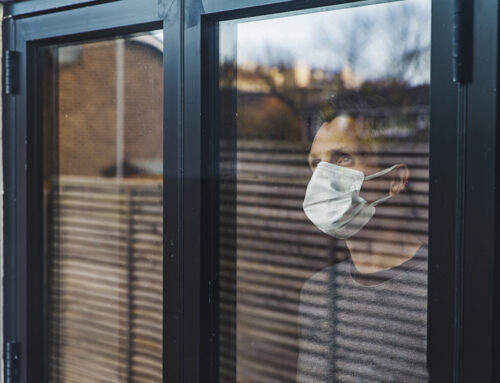
But screening usually discontinued for them if previous smear tests normal
Global incidence rising in this age group; rethink of guideline recommendations needed
Women aged 65 and above are still at heightened risk of cervical cancer caused by human papillomavirus (HPV), suggest the findings of a large observational study published in the open access journal Gynecology and Obstetrics Clinical Medicine.
But most guidelines currently recommend discontinuing screening for the disease in women aged 65+ if they have had previously normal smear tests. Yet global cases of cervical cancer have been rising among women in this age group, prompting the researchers to call for a policy rethink.
Recent data from the World Health Organization indicate that there were 157,182 new cases in women in this age group and 124,269 deaths from the disease worldwide in 2022.
In light of these trends, they sought to analyse cervical cancer screening data to identify characteristics of high risk HPV infection among older women, including infection rates and genotype distribution, as well as the prevalence of cervical intraepithelial grade 2 or worse (CIN2+).
CIN2 indicates moderately abnormal cells in the cervical lining. CIN2 may clear up on its own, but it may also progress to more serious abnormalities and cervical cancer if left untreated.
The researchers retrospectively analysed cervical cancer screening data, which included HPV vaccination status, from 628 different types of healthcare facilities across Shenzhen, China, collected between 2017 and 2023.
High risk HPV infection results were categorised as none, single, double, triple or multiple.
Any woman with abnormal test results (HPV+ smear test) on initial screening was referred for colposcopy—a procedure that enables closer examination of the cervix under a microscope. Biopsy specimens were taken if any suspicious cells were detected.
In all, 2,580,829 women were screened for cervical cancer between 2017 and 2023, and complete data were available for 2,152,766 of them.
Their average age was 40, with most aged between 25 and 54. Only just over 2% had been vaccinated against HPV. Some 17420 (just under 1%) were aged 65 and above; the remainder (2,135, 346) were younger.
Most (92%) tested negative for high risk HPV genotypes: just over 2% tested positive for HPV16/18; and just under 6% were infected with other HPV genotypes.
Just over 4% (89,148) of the women were referred for colposcopy, and suspicious abnormalities were identified in 42% (37,418) of them.
The prevalence of high risk HPV infections and CIN2+ were higher in women aged 65+ than they were in those who were younger
Among the older women, nearly 14% tested positive for high risk HPV genotypes, compared with 8% of those who were younger.
Older women were also more likely (23% vs 16.5%) to be infected with several different types of HPV and more likely to have abnormalities picked up on screening (just over 7% vs just over 4%).
Similarly, the percentage of CIN2+ abnormalities picked up during colposcopy was higher in the older women: 14% vs 9%. Overall, the detection rate of CIN2+ was very low (58) in the older women compared with 3320 in those who were younger.
And the cancer detection rate was similarly very low (16) for the over 65s, although it was much lower (205) among those who were younger.
The distribution of single and double high risk HPV infections differed in their potential to cause CIN2+, and the distribution differed from that of younger women.
Single, double, and triple high risk HPV infections were also more common among the older women: 10.5% (1839); nearly 2.5% (404); and just over 0.5% (99), respectively, with associated CIN2+ rates of 2%, 3%, and 4%, respectively.
The most common genotypes in older women were HPV52, HPV16, HPV58, HPV56 and HPV68,with HPV18, HPV16, and HPV33 associated primarily with CIN2+, along with frequent double infections, such as HPV52/58, HPV16/52 and HPV52/56.
And the greater the number of high risk HPV infections, the greater was the risk of CIN2+ in the older women. It was 56 times higher for a single infection, rising to 66 times higher for double infection, and 85.5 for 3 or more.
These risks were higher in the younger women, after accounting for potentially influential factors, such as ethnicity and vaccination status.
This is an observational study, and as such, no definitive conclusions can be drawn about causal factors. The researchers also acknowledge that the data were taken from women who had been screened, and the over 65s aren’t included in China’s screening programme for cervical cancer. The study was also confined to one region of China only. And there were only a few high risk HPV infections detected in the older women.
Nevertheless, the researchers say: “These data indicate that women [aged 65 and above] are a high-risk group for cervical cancer incidence and mortality, necessitating urgent attention from countries worldwide.”
They continue: “Most guidelines suggest stopping screening for those with adequate primary screening and no high-risk factors, particularly for women under 65. However, the situation differs for those over 65, who may not have been vaccinated or thoroughly screened. With increasing life expectancy, the risk of cervical cancer in this demographic is significantly heightened.”
Declining immunity and postmenopausal hormonal changes might increase susceptibility to high risk HPV infection and cervical cancer risk, especially if these women missed early screening, they add.
02/07/2025
Notes for editors
Research: High-risk HPV distribution and importance of continuing cervical cancer screening of women aged 65 years and older: a study based on 2 152 766 women in China Doi: 10.1136/gocm-2025-000238
Journal: Gynecology and Obstetrics Clinical Medicine
External funding: Sanming Project of Medicine in Shenzhen
Link to Academy of Medical Sciences press release labelling system
http://press.psprings.co.uk/
Externally peer reviewed? Yes
Evidence type: Observational
Subjects: Older women
The post Women 65+ still at heightened risk of cervical cancer caused by HPV first appeared on BMJ Group.




